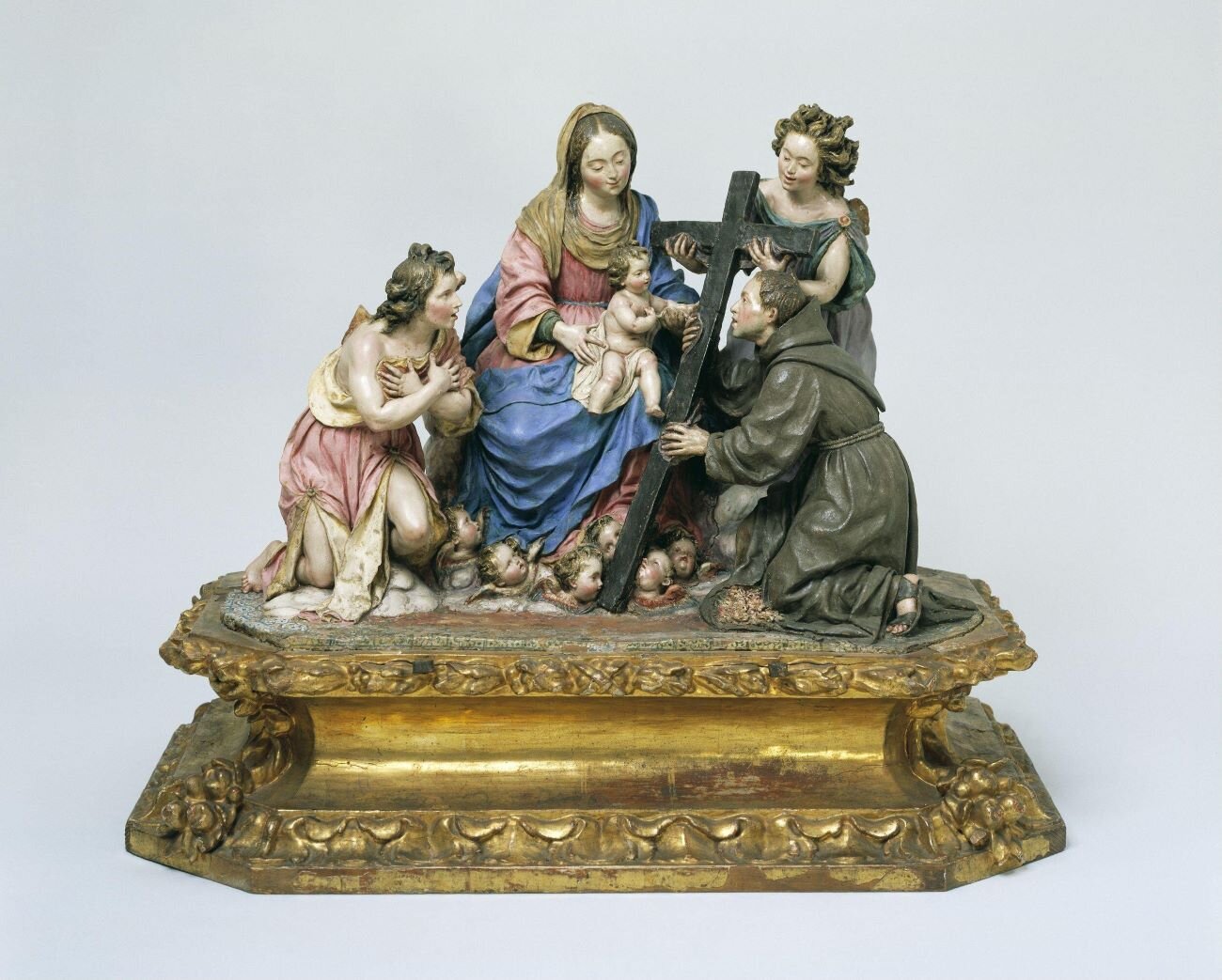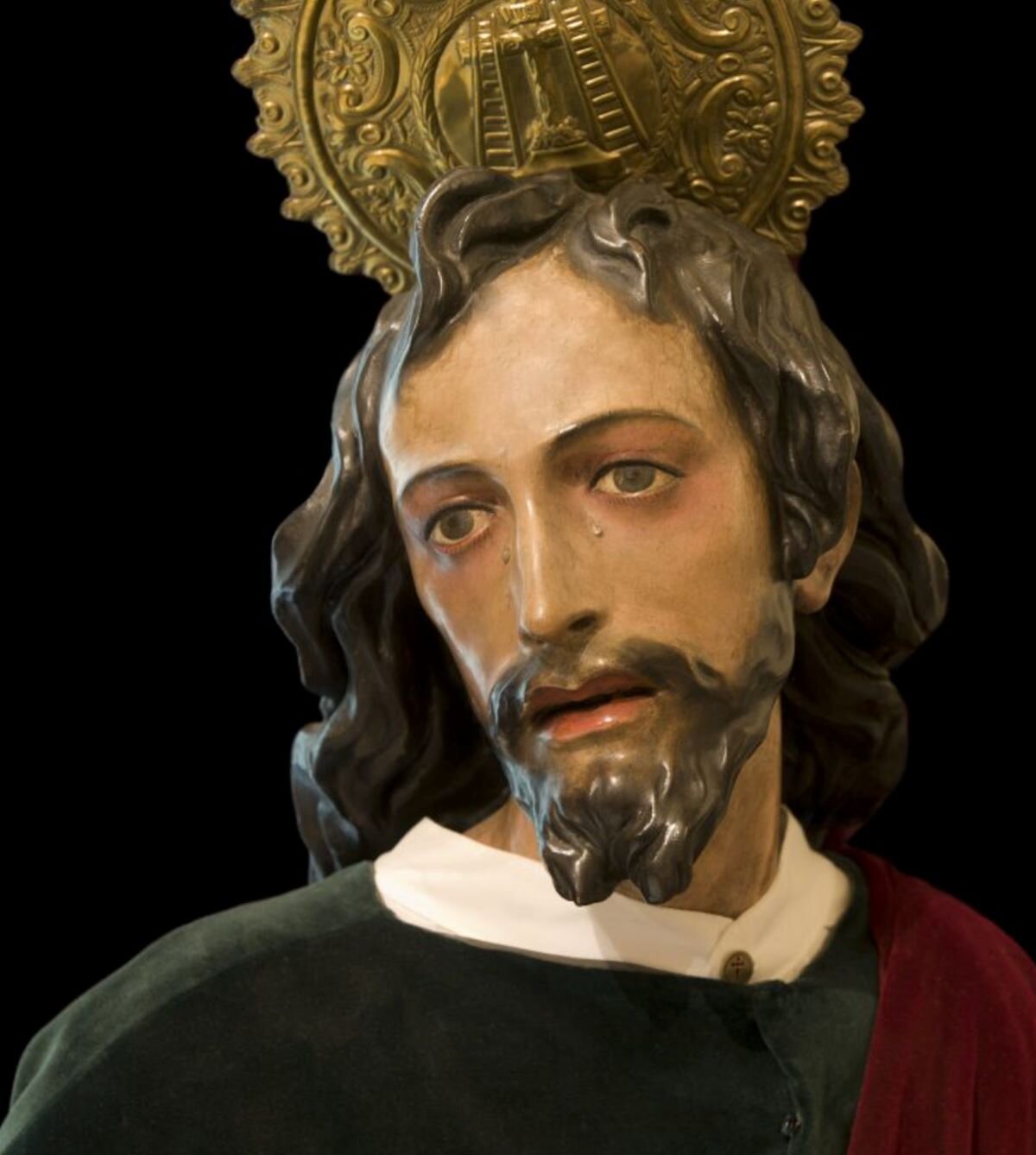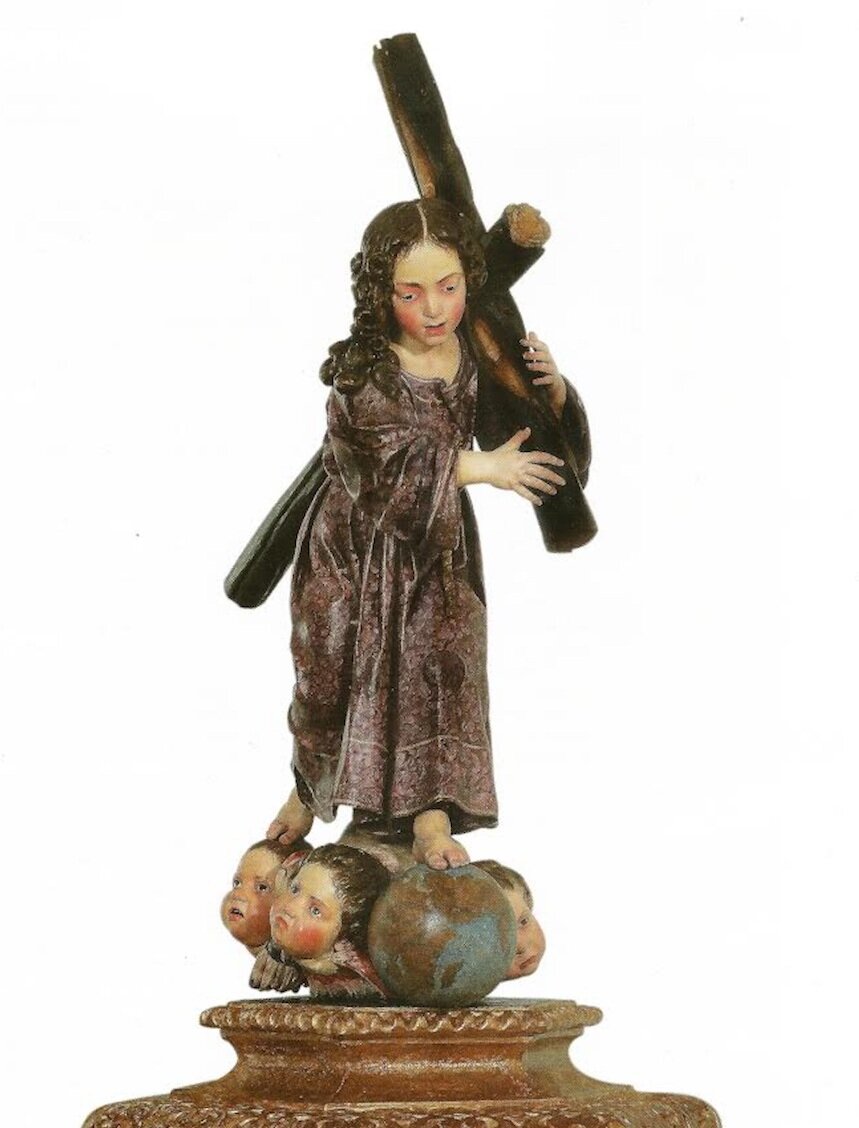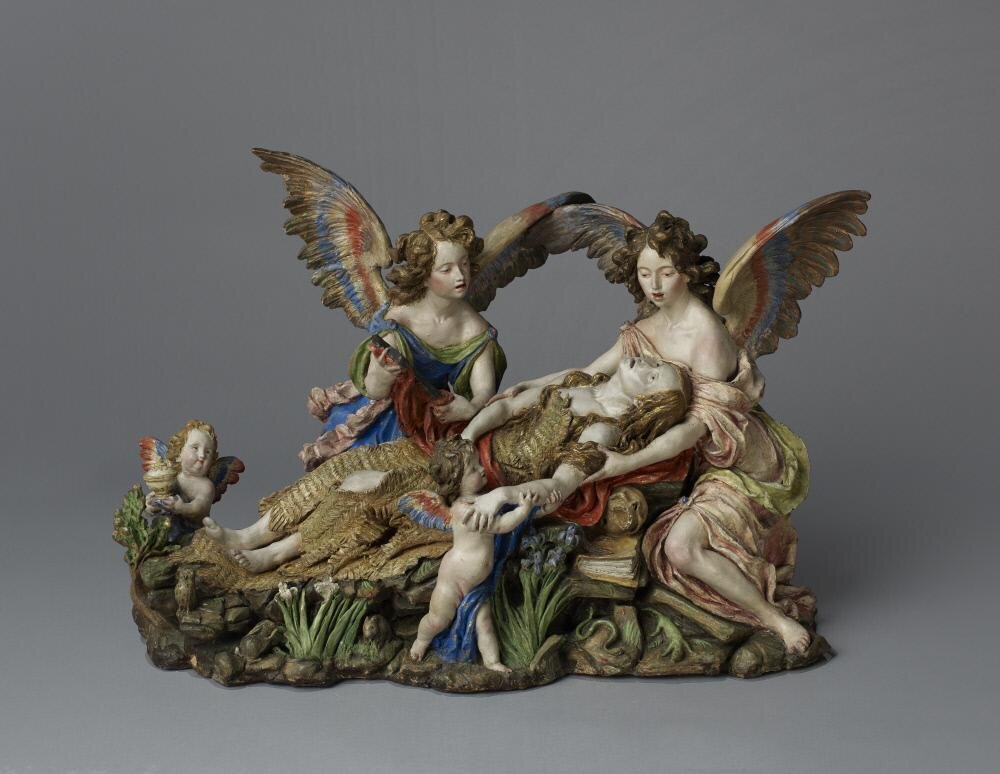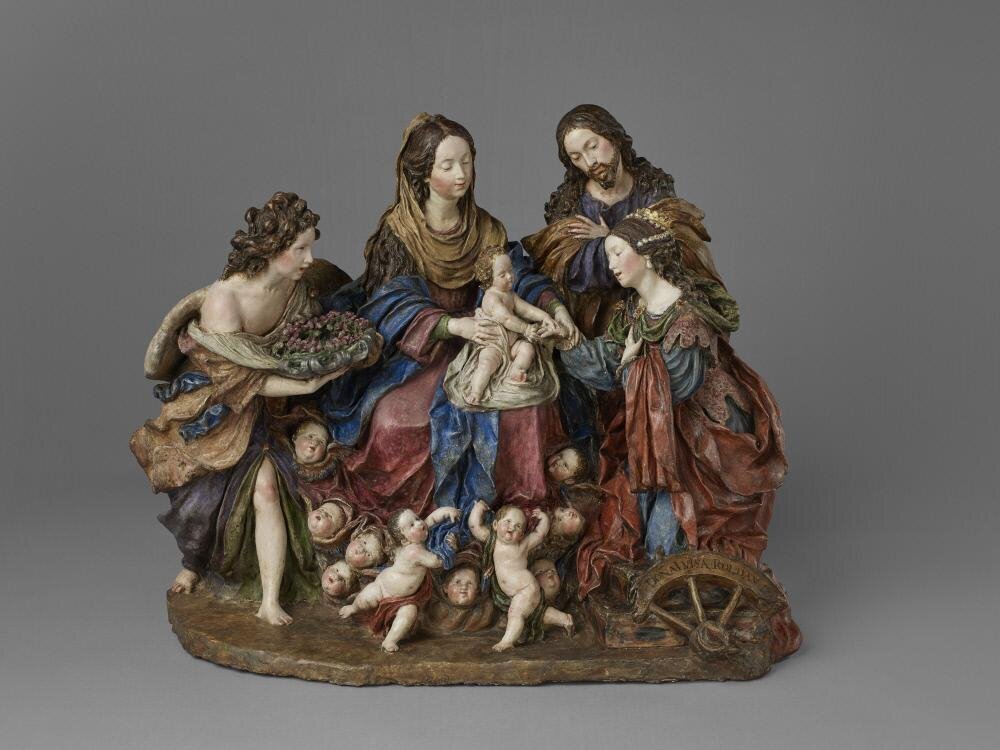pick of the month: luisa roldán
ILLUMINATING LUISA ROLDÁN
Cathy Hall-van den Elsen
The Spanish sculptor Luisa Roldán was renowned in her day but until recently had almost been forgotten, and verifiable details about her life were few. Born in Seville in 1652 Luisa learnt much about the art of carving wooden sculptures in her family’s workshop. Many of her works adorn altarpieces and processional floats in Seville and Cádiz where she is fondly known as “La Roldana”. After establishing an early reputation in Andalucía as an accomplished sculptor she was drawn to the significantly more challenging environment of the Royal Court in Madrid. With her husband and children she settled in the capital in 1689 producing over-life-sized individual figures in wood and delicate groups in terracotta until her death in 1706.
This month sees the publication of Luisa Roldan by Cathy Hall-Van den Elsen (Lund Humphries, 2021), the first monograph on the sculptor written in English, offering an exploration of the social contexts of Luisa’s life as well as discussion of many little-known sculptures that she created in both wood and terracotta. The volume explores insights gained from close examination of known works and extensive archival research.
Luisa Roldán, St Joachim and St Anne with the Infant Mary, 1692–1705, polychromed terracotta, 34 × 28 × 33 cm, Museo de Bellas Artes, Palacio del Infantado, Guadalajara.
Most of her work in wood can be found in southern Spain. Her creative output in terracotta is not so easy to track. In 1701 Luisa wrote to Felipe V, the new king of Spain about her position at Court, reaffirming her claim to the prestigious role of Sculptor to the Royal Chamber that she held during the reign of the recently deceased king Carlos II. She reminded Felipe of the “more than eighty” sculptures in terracotta that she had completed for the Royal Court. Today we know of less than half that number, which leaves the tantalising possibility that while some of the delicate works may have been destroyed, others remain in private collections, unknown to the general public.
To discover what they were, and where they might be, bears uncomfortable parallels to the search for a needle in a haystack. References to unknown works attributed to Luisa have been found in old catalogues, dowry agreements, testamentary inventories, ‘for sale’ notices in eighteenth century newspapers and old photographs. Works of certain authorship sometimes appear with little or no established provenance (like the Entombment of Christ at the Metropolitan Museum pictured below) and others are added to the catalogue through re-attribution (like the Christ Child Carrying the Cross from the Royal Congregation of San Fermín de los Navarros, also below).
One of the most exciting aspects of working on a (re-)discovered artist is the scope for new discoveries. The Education of the Virgin acquired in 2018 by the Blanton Museum of Art in Austin Texas is a case in point. The group was purchased in Madrid by the German ambassador to Spain sometime between 1888- 1893. Known only from a black and white image published in 1932 and reproduced in 1964 it had not been seen for decades. Ninety years after its first publication the group has appeared again, and is now beautifully restored, sitting proudly in the Blanton Museum’s European Gallery.
Our catalogue of Roldán’s known works in terracotta may never reach eighty as Luisa’s letter indicated, and some works in both media may have been lost through the vicissitudes of history, but the images included in the new monograph demonstrate that a cautious eye and a great deal of patience can lead to serendipitous results!
